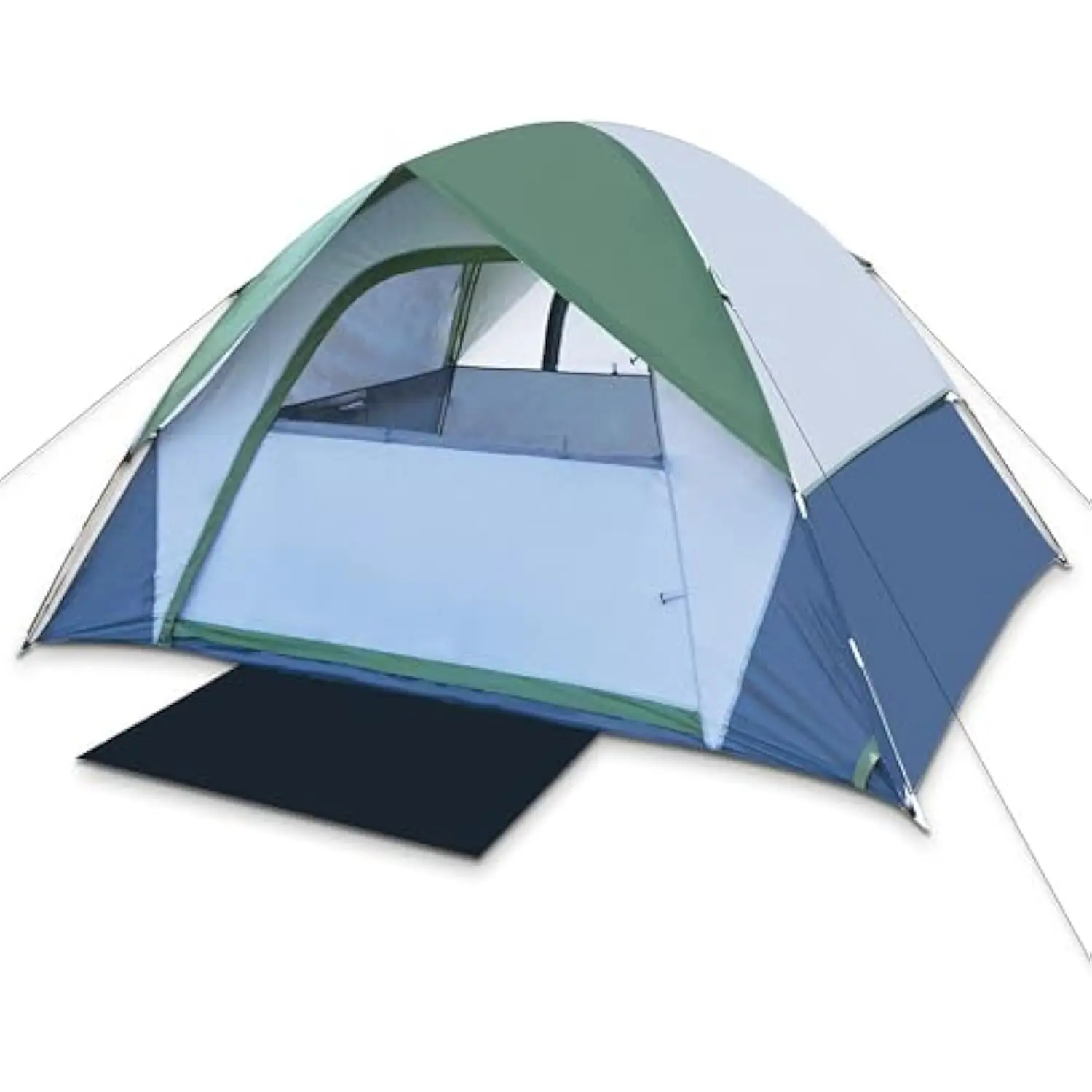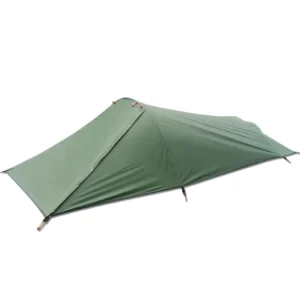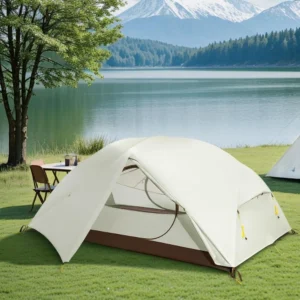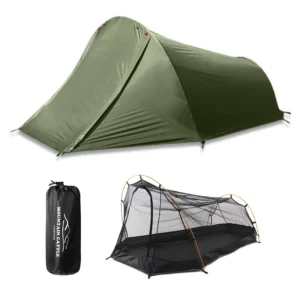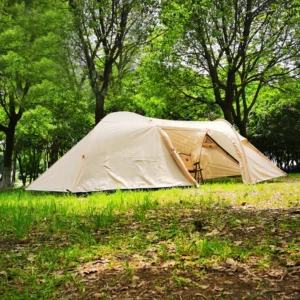Understanding Waterproofing Fundamentals
When venturing into the outdoors, understanding the difference between waterproof, water-resistant, and water-repellent gear is crucial for staying comfortable and dry. These terms aren’t interchangeable, though many hikers mistakenly use them as such.
- Waterproof: Completely prevents water from penetrating through the material even under pressure (like heavy rain or sitting in a puddle)
- Water-resistant: Can withstand light moisture for a limited time but will eventually let water through
- Water-repellent: Features a surface treatment that causes water to bead up and roll off rather than soak in
The central challenge for manufacturers of hiking gear is creating materials that accomplish two seemingly contradictory goals: blocking external moisture from entering while allowing internal moisture (sweat) to escape. This delicate balance is achieved through advanced materials science and innovative construction techniques.
Materials are considered truly waterproof when they can withstand water pressure of at least 1,500mm in hydrostatic head tests, though high-quality hiking gear often features ratings of 5,000mm to 20,000mm or more. Throughout this guide, we’ll explore the science and materials that make modern waterproof hiking gear possible while maintaining comfort during active outdoor pursuits.
The ultimate guide to waterproof gear for backpackers provides additional context on how these fundamental concepts apply to various outdoor situations.
Waterproof Breathable Membranes: The Core Technology
At the heart of modern waterproof hiking gear is the waterproof breathable membrane—a remarkable technology that selectively blocks liquid water while allowing water vapor to pass through. These membranes come in two primary types:
Microporous Membranes
These membranes contain microscopic pores that create a physical barrier. The pores are large enough to allow water vapor molecules to escape but small enough to prevent liquid water droplets from entering. To understand the scale involved, water vapor molecules are approximately 20,000 times smaller than the smallest water droplet. This fundamental size difference is what makes selective permeability possible.
Hydrophilic Non-Porous Membranes
Rather than relying on physical holes, these membranes use a chemical process. The material absorbs moisture from the body side and transfers it through the solid membrane via molecular diffusion. The molecules then evaporate on the outer surface. This chemical process allows for extremely waterproof barriers without any physical openings.
Both technologies work on the principle of pressure differential—water vapor naturally moves from areas of higher concentration (inside your sweaty jacket) to areas of lower concentration (the outside air). This phenomenon, combined with clever material engineering, creates gear that keeps rain out while letting your body breathe.
Understanding how these membranes perform under different conditions is critical when selecting gear. The understanding waterproof ratings in backpacking gear guide explains how manufacturers test and rate these technologies.
Leading Membrane Technologies in Hiking Gear
The market offers several proprietary membrane technologies, each with unique characteristics and performance profiles:
ePTFE Membranes
* Gore-Tex: The original and still leading ePTFE (expanded polytetrafluoroethylene) membrane, available in various versions optimized for different activities
* Gore-Tex Pro: Designed for extreme conditions with enhanced durability
* Newest Gore-Tex ePE technology: Uses expanded polyethylene instead of PTFE for reduced environmental impact while maintaining performance
Polyurethane (PU) Membranes
* Pertex Shield: Offers excellent balance between waterproofness, breathability, and packability
* The North Face’s DryVent: Engineered for consistent protection across diverse activities and environments
* Patagonia’s H2No: Focuses on long-term durability and consistent performance
* The North Face’s Futurelight: Uses nanospinning technology to create an ultra-thin, air-permeable membrane
Polyester/Polyether Membranes
* SympaTex: A hydrophilic, non-porous membrane that’s 100% recyclable and PTFE-free
* Moisture transfer rates: Can move 8,000-15,000 g/m²/24hr depending on conditions
Air-Permeable Membranes
* eVent: Direct venting technology allows air to pass through for enhanced breathability
* Outdoor Research’s AscentShell: Electrospun membrane offering exceptional breathability for high-output activities
Each technology represents different approaches to the same challenge, with varying results in breathability, durability, and waterproofness. Your ideal choice depends on activity level, environmental conditions, and personal preferences.
For practical applications of these technologies across different types of gear, check out our guide on essential waterproof gear for backpackers.
Face Fabrics and Outer Shell Materials
While the membrane provides waterproofness, the outer fabric (face fabric) plays a critical role in the overall performance and durability of waterproof gear. These materials protect the delicate membrane from abrasion and tears while contributing to the gear’s overall weight and feel.
Most face fabrics are made from either nylon or polyester, each with distinct properties:
| Material | Durability | UV Resistance | Drying Time | Weight |
|---|---|---|---|---|
| Nylon | Higher | Lower | Slower | Lighter for same strength |
| Polyester | Moderate | Excellent | Faster | Slightly heavier |
Denier Ratings and Applications
Denier (D) refers to the thickness of individual fibers in the fabric, directly impacting durability and weight:
- 10D-20D: Ultralight gear, minimal abrasion resistance, used in emergency shells and ultralight tents
- 30D-40D: Standard for most hiking jackets and 3-season tents, balancing weight and durability
- 50D-70D: Heavy-duty applications, backpacks, mountaineering equipment
- 70D+: Expedition gear, maximum durability for extreme conditions
Specialized weave patterns like ripstop incorporate stronger threads in a grid pattern, preventing small tears from spreading. This technique allows manufacturers to use lighter fabrics while maintaining acceptable durability.
The critical balance is finding face fabrics that protect the waterproof membrane without adding unnecessary weight or stiffness—a consideration that varies based on your intended use and environmental conditions.
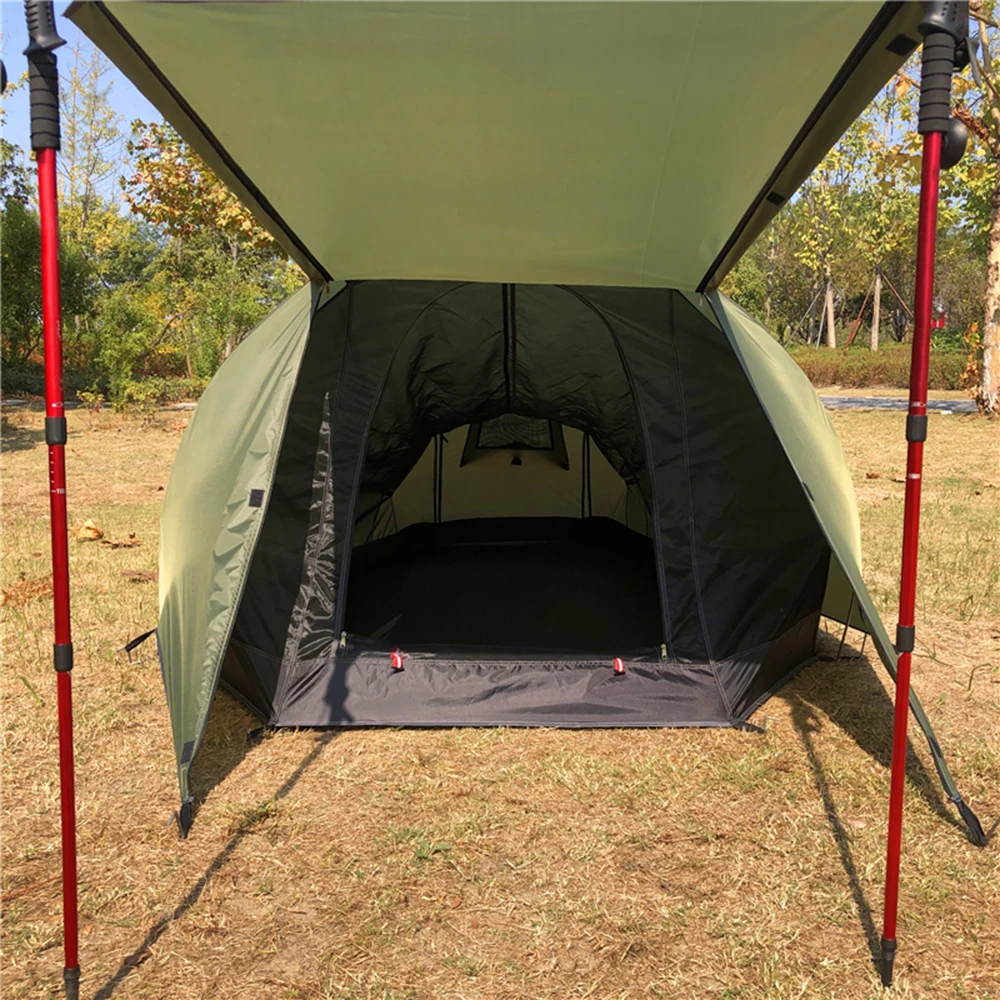
For advice on extending the life of your gear’s face fabrics, our maintaining waterproof gear care guide provides essential tips and techniques.
Durable Water Repellent (DWR) Treatments
Durable Water Repellent (DWR) is a critical yet often misunderstood component of waterproof gear systems. This invisible treatment applied to the outer fabric creates a hydrophobic (water-hating) surface that causes water to bead up and roll off rather than saturate the material.
DWR serves as the first line of defense in a waterproof system and serves several crucial functions:
- Prevents the outer fabric from becoming saturated with water (“wetting out”)
- Maintains breathability by keeping water in droplet form on the surface
- Reduces the weight increase that would occur if the fabric absorbed water
- Improves comfort by preventing the cold, clammy feeling of wet fabric against the membrane
When functioning properly, water on DWR-treated fabric forms perfect beads that readily roll off. When DWR deteriorates, the fabric darkens as it absorbs water, significantly reducing breathability even though the membrane underneath remains waterproof.
The outdoor industry has undergone a significant shift in DWR technology:
* Traditional C8 perfluorocarbon (PFC) treatments: Highly effective but environmentally persistent
* Shorter-chain C6 PFCs: Reduced environmental impact but slightly less effective
* PFC-free alternatives: Silicone-based, hydrocarbon, or wax-based treatments with varying performance but minimal environmental concerns
For specific information on how DWR treatments affect gear performance ratings, visit our detailed guide on understanding tent waterproof ratings.
Construction Methods for Waterproof Gear
The way waterproof materials are assembled significantly impacts performance, durability, and comfort. There are three primary construction methods for waterproof gear:
2-Layer Construction
* Structure: Outer fabric bonded to the membrane, with a separate hanging liner inside
* Weight: Moderate to heavy (typically 14-20 oz for a jacket)
* Durability: Good, with liner protecting the membrane
* Best for: Casual hiking, everyday use, budget-conscious buyers
* Feel: Softer, less crinkly, more comfortable for general wear
2.5-Layer Construction
* Structure: Outer fabric bonded to membrane plus a lightweight protective print or coating
* Weight: Light (typically 7-12 oz for a jacket)
* Durability: Moderate, more prone to contamination from oils and dirt
* Best for: Lightweight backpacking, emergency shells, packable options
* Feel: Typically crinklier with a less substantial hand-feel
3-Layer Construction
* Structure: Outer fabric, membrane, and backer fabric all bonded together
* Weight: Moderate (typically 11-16 oz for a jacket)
* Durability: Excellent with the membrane fully protected from both sides
* Best for: Technical pursuits, rugged environments, heavy use
* Feel: Substantial, protective, sometimes stiffer but increasingly comfortable with advanced materials
Seam Sealing Methods
Regardless of construction type, waterproof gear requires sealed seams since needle holes would otherwise allow water penetration:
- Tape sealing: Heat-applied waterproof tape covering stitch lines
- Welded seams: High-frequency welding that joins materials without stitching
- Glued seams: Adhesive bonding that creates waterproof connections
For more information about how construction methods specifically apply to shelter design, explore our article on essential design elements in waterproof tents.
Performance Metrics: Understanding Waterproofing Ratings
When evaluating waterproof hiking gear, two key metrics help quantify performance capabilities:
Waterproofness: Hydrostatic Head (HH)
Measured in millimeters (mm), this rating indicates how much water pressure the material can withstand before leaking:
| Rating | Suitable For | Real-World Equivalent |
|---|---|---|
| 1,500-3,000mm | Light rain, minimal pressure | Brief showers, minimal contact with wet ground |
| 5,000-10,000mm | Moderate rain, some pressure | Day hikes in rainy conditions, sitting on damp ground |
| 10,000-20,000mm | Heavy rain, significant pressure | Backpacking in sustained downpours, kneeling on wet ground |
| 20,000mm+ | Extreme conditions, high pressure | Alpine expeditions, severe weather, water crossings |
Breathability: Moisture Vapor Transmission Rate (MVTR)
Measured in grams of water vapor that can pass through one square meter of fabric in 24 hours (g/m²/24hr):
- 5,000-10,000 g/m²/24hr: Suitable for low-intensity activities
- 10,000-15,000 g/m²/24hr: Good for moderate hiking and backpacking
- 15,000-20,000 g/m²/24hr: Excellent for high-output activities
- 20,000+ g/m²/24hr: Superior breathability for aerobic pursuits
Alternative Breathability Measure: RET Value
Resistance to Evaporative Transfer (RET) measures how much the fabric resists moisture transfer:
* RET under 6: Extremely breathable
* RET 6-13: Very breathable
* RET 13-20: Satisfactory breathability
* RET 20+: Poor breathability
The ideal waterproof gear strikes a balance between these metrics based on intended use. Higher waterproofness typically comes at the expense of some breathability and vice versa. For specific guidance on waterproof ratings, our article on is 3000mm waterproof enough provides practical context for different outdoor activities.
Real-World Factors Affecting Waterproof Performance
Laboratory ratings provide a useful baseline, but real-world performance of waterproof materials is influenced by numerous external factors:
Environmental Conditions
* Humidity: High humidity (90%+) drastically reduces breathability as moisture can’t evaporate efficiently from the outer surface
* Temperature differential: Larger differences between body temperature and outside air improve moisture transfer
* Precipitation intensity: Heavy, driving rain applies more pressure to materials than light drizzle
* Wind: Can enhance breathability by removing humidity from around the fabric, but also increases perception of cold
Activity Level and Body Heat
* Low-intensity activities produce around 500g of sweat per hour
* High-intensity activities can generate 1,000-2,000g of sweat per hour, potentially overwhelming even the most breathable fabrics
* Body heat drives the vapor pressure differential that pushes moisture through membranes
Wetting Out Phenomenon
When DWR fails and the face fabric becomes saturated:
* Breathability can decrease by 70% or more
* The gear becomes heavier
* “Clamminess” increases as the cold outer fabric conducts temperature to your skin
* The membrane continues blocking water entry, but comfort dramatically decreases
Contamination Issues
* Body oils, sunscreen, dirt, and insect repellents can clog membrane pores
* Improper washing can leave detergent residue that attracts water molecules
* Salt from sweat can create paths for water to follow through the membrane
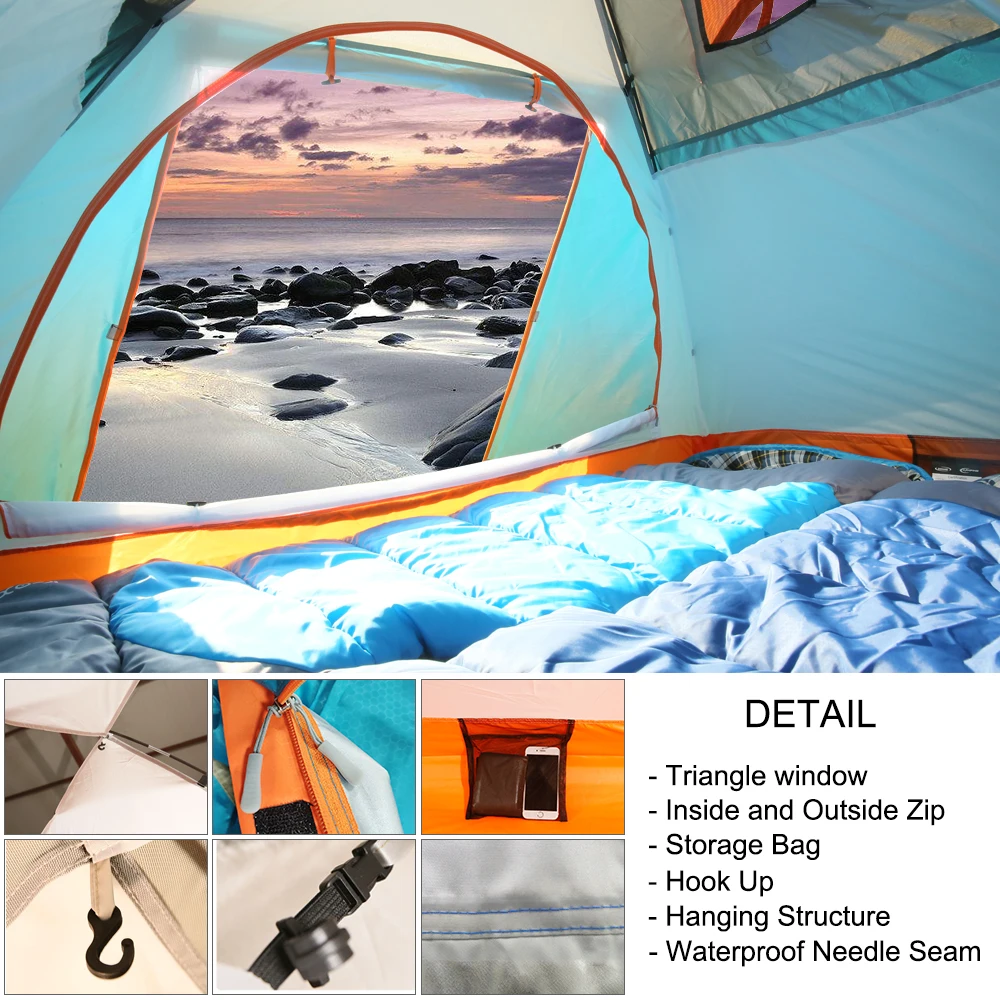
For practical waterproof solutions that account for these real-world factors, browse our collection of waterproof camping tents designed to handle various environmental challenges.
Choosing the Right Waterproof Materials for Your Needs
Selecting appropriate waterproof materials requires matching technology to your specific activity profile and environment:
Activity Intensity Considerations
* Running/Fast Hiking: Prioritize high breathability (15,000+ g/m²/24hr) and lightweight construction (2-2.5 layer) over absolute waterproofness
* Moderate Backpacking: Balance breathability and waterproofness (10,000mm+ HH, 10,000+ g/m²/24hr) with 2.5 or 3-layer construction
* Mountaineering/Alpine: Maximum waterproofness (20,000mm+ HH) and durability with 3-layer construction, breathability still important but secondary
Climate Factors
* Humid environments: Air-permeable membranes perform better as they don’t rely solely on differential pressure
* Cold conditions: Higher waterproofing ratings matter more than maximum breathability
* Desert regions: Durability against abrasion may outweigh absolute waterproofness
Duration Considerations
* Day activities: Lighter, more packable options (2-2.5 layer) often sufficient
* Multi-day trips: More durable constructions justify additional weight
* Expeditions: Maximum durability and reliability (3-layer with higher denier face fabrics)
Budget Considerations
* Entry-level: 2-layer construction with basic membranes ($80-150 for jackets)
* Mid-range: 2.5-layer or basic 3-layer construction ($150-300)
* Premium: Advanced 3-layer construction with specialized membranes ($300-600+)
For extended trips where reliable waterproofing is essential, explore our waterproof backpacking tent collection designed for varying conditions and durations.
Lightweight Backpacking Tent, Ultralight Backpacking Tent, Ultralight Bivy Tent
Ultralight Single Person Camping Tent with Aluminum Poles for 3-Season Backpacking Waterproof DesignPrice range: $94.88 through $326.82 Select options This product has multiple variants. The options may be chosen on the product pageLightweight Backpacking Tent, Ultralight Backpacking Tent, Waterproof Backpacking Tent
$391.05 Select options This product has multiple variants. The options may be chosen on the product pageHeavy Duty 4 Season Tent, Mountaineering Tent, Winter Camping Tent
$870.40 Select options This product has multiple variants. The options may be chosen on the product pageCompact Backpacking Tent, Lightweight Backpacking Tent, Waterproof Camping Tent
$335.52 Select options This product has multiple variants. The options may be chosen on the product pageUltralight Backpacking Tent, Ultralight Dome Tent, Winter Camping Tent
Price range: $369.63 through $370.07 Select options This product has multiple variants. The options may be chosen on the product pageCamping Tent with Vestibule, Waterproof Camping Tent
Price range: $407.89 through $479.48 Select options This product has multiple variants. The options may be chosen on the product page
How Do I Care for Waterproof Hiking Gear?
Proper maintenance significantly extends the life and performance of waterproof materials:
Washing Techniques
* Use technical cleaners specifically designed for outdoor gear (NOT regular detergents)
* Machine wash on gentle cycle with warm water (104°F/40°C)
* Rinse twice to ensure all soap residue is removed
* Zip all zippers, close all fasteners before washing
Drying Methods
* Tumble dry on low/medium heat to reactivate DWR (if manufacturer allows)
* Air dry hanging or laid flat if tumble drying not recommended
* Ensure gear is completely dry before storage to prevent mildew
DWR Reapplication
* Apply when water no longer beads on the surface
* Choose spray-on products for spot treatment
* Use wash-in treatments for more comprehensive coverage
* Heat (dryer or iron on low setting) helps activate most DWR treatments
Storage Recommendations
* Store loosely, not tightly compressed
* Keep in dry, cool location away from direct sunlight
* Hang jackets on padded hangers
* Store sleeping bags and tents loosely in storage sacks, not compression bags
Proper care is particularly important for technical winter gear, such as our 4-season winter 2-person tents which face extreme conditions and benefit from regular maintenance.
Are Sustainable Waterproof Materials Effective?
As environmental awareness grows, sustainable waterproof materials have evolved significantly:
PFC-Free DWR Performance
* Early iterations: 70-80% as effective as traditional PFCs, with faster deterioration
* Current technologies: Approaching traditional performance in repellency with 1-2 fewer washes of durability
* Application-specific formulations: Some newer treatments perform better on specific base materials
Recycled Content Face Fabrics
* Recycled polyester: Performs identically to virgin materials when properly processed
* Recycled nylon: Slightly more challenging to produce with consistent quality but improving rapidly
* Many brands now offer 30-100% recycled content in face fabrics without performance compromise
Bio-Based Alternatives
* Plant-based membranes: Derived from castor beans and other renewable sources
* Performance: Currently approaching traditional membranes with 85-95% of the waterproof/breathable capabilities
* Compostability: Some new materials break down at end-of-life, reducing landfill impact
Industry Leaders
Brands like Patagonia, Jack Wolfskin, and Vaude have successfully implemented PFC-free DWR treatments across their product lines without significant performance complaints from users, demonstrating that sustainability and function can coexist.
For hikers seeking environmentally conscious options that don’t sacrifice performance, our ultralight backpacking tent collection includes models utilizing innovative sustainable materials.
Can Waterproof Gear Last Forever?
While no gear lasts forever, understanding material lifespans helps maximize your investment:
Realistic Lifespan Expectations
* Membrane integrity: 5-7 years with regular use, 10+ years with occasional use and proper care
* DWR treatments: 10-20 washes before significant deterioration
* Face fabrics: Often the first failure point, especially in high-abrasion areas
Common Failure Points
* Seam tape delamination: Typically occurs before membrane failure
* High-wear areas: Shoulders (under backpack straps), cuffs, and collar
* Zipper systems: Often fail before the waterproof materials themselves
Repair Options
* Seam sealing: Can be reapplied when original seam tape fails
* Patch kits: Most major manufacturers offer repair materials for tears
* Professional services: Companies like Rainy Pass Repair can extend gear life significantly
Durability as Sustainability
Investing in higher-quality materials often results in longer-lasting gear, which ultimately creates less environmental impact than repeatedly replacing lower-quality items. This perspective views initial cost as an investment in durability rather than an expense.
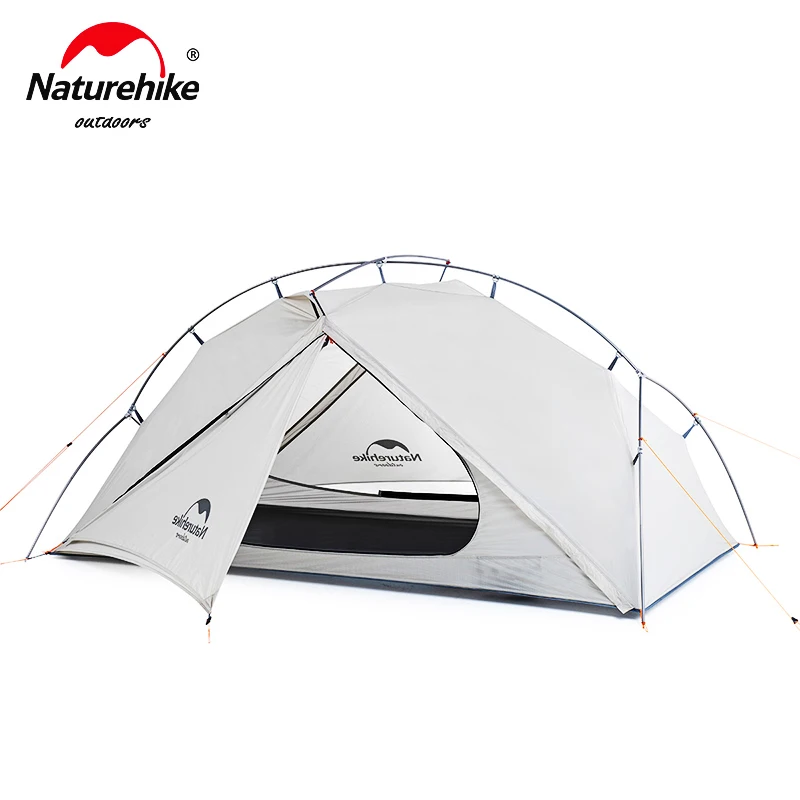
For those prioritizing maximum durability in extreme conditions, our heavy-duty 4-season tent collection features reinforced materials designed for extended use in challenging environments.
What Innovations Are Coming in Waterproof Materials?
The waterproof materials landscape continues to evolve with exciting developments on the horizon:
Nanotechnology Advancements
* Ultra-thin waterproof layers measuring just 0.1 microns (vs. traditional 10+ microns)
* Nanoscale surface structures that mimic lotus leaves for superhydrophobic properties
* Dramatically improved strength-to-weight ratio in membranes and face fabrics
Adaptive and Smart Textiles
* Temperature-responsive membranes that increase permeability when you heat up
* Electronically controlled pore structures that adjust breathability based on conditions
* Fabrics that change properties in response to moisture levels
Eco-Friendly Innovations
* Biodegradable waterproof membranes derived from natural polymers
* PFC-free DWR treatments with performance matching traditional chemicals
* Closed-loop manufacturing processes that eliminate waste and water pollution
Emerging Membrane Technologies
* Columbia’s OutDry Extreme: Membrane-on-the-outside construction eliminating face fabric saturation
* Gore-Tex ePE: Expanded polyethylene offering reduced environmental impact with maintained performance
* Electrospun nanofiber membranes providing unprecedented breathability-to-waterproofness ratio
These innovations point to a future where waterproof gear offers even better performance with reduced environmental impact. For more information on how cutting-edge materials are being implemented in versatile outdoor equipment, check out our all-season tent materials guide.
Which Waterproof Materials Are Most Durable?
When maximum durability is the priority, certain material combinations consistently outperform others:
Among membrane technologies, traditional ePTFE (Gore-Tex Pro, eVent) offers superior abrasion and flex resistance compared to polyurethane membranes. However, PU membranes often demonstrate better chemical resistance and may last longer when exposed to body oils and sunscreen.
The construction method significantly impacts durability, with robust 3-layer designs offering 2-3 times the lifespan of 2.5-layer alternatives in high-abrasion scenarios. The protective inner layer prevents contamination and abrasion from the inside while the face fabric handles external challenges.
For face fabrics, high-denier nylon (70D+) with ripstop construction provides outstanding tear resistance, particularly important for gear that encounters rough terrain or heavy use. Some specialty fabrics like Cordura or Kevlar blends offer exceptional durability but at the cost of added weight and reduced breathability.
Specific use cases requiring maximum durability include alpine mountaineering, bushwhacking through dense vegetation, professional guiding, and military applications. In these scenarios, the weight penalty of more durable materials is justified by their extended usable life.
Is Expensive Waterproof Gear Always Better?
The correlation between price and performance in waterproof gear isn’t always straightforward:
Premium materials often provide measurable advantages in extreme conditions. For instance, top-tier 3-layer fabrics with advanced membranes (like Gore-Tex Pro) demonstrate 30-40% better moisture transfer in laboratory tests than budget alternatives when pushed to their limits in high-output activities.
However, for moderate conditions and casual use, mid-range options frequently deliver 80-90% of premium performance at 50-60% of the cost. Materials like Marmot’s NanoPro or REI’s Peak 2.5L provide effective waterproofing and reasonable breathability for most recreational hikers.
The diminishing returns principle applies strongly to waterproof gear—the performance difference between a $150 and $300 jacket is typically greater than between a $300 and $600 jacket. For weekend hikers in moderate conditions, budget-friendly options with 10,000mm waterproofing and 10,000g/m²/24hr breathability ratings often provide perfectly adequate protection.
Consider your actual needs rather than marketing claims when making purchasing decisions. Many hikers find that matching their material selection to their specific activities and local climate is more important than buying the most expensive option available.

